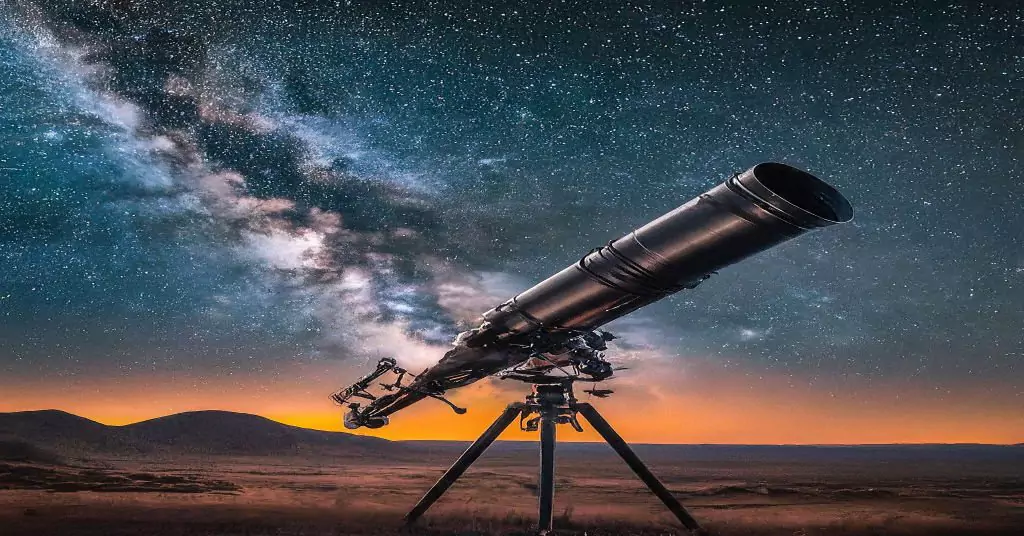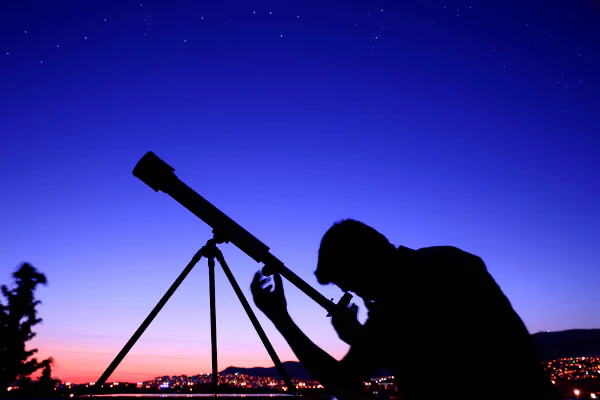Best Telescope Feature For Night Sky Viewing
Looking up at the night sky and seeing all those stars can make you wonder. Humans have always been curious about the universe, and telescopes help us get a closer look at the fantastic things up there. But with so many telescopes, figuring out which is right for you can take time and effort. This guide will explain the important things to consider when you want to look at the stars, making it easier for you to pick the perfect telescope for your needs.
Critical Factors for Night Sky Viewing with a Telescope
A few important things must be considered when choosing a telescope to ensure the best experience.
Aperture (Light Gathering Power):
The first thing is the aperture, like the telescope’s eye. The bigger the aperture, the more light it can gather, giving you more transparent and brighter views of the stars. If you want to see planets up close, a 6 to 8-inch medium-sized aperture will do the trick. But if you’re interested in fainter objects like galaxies and nebulae, you’ll want a bigger aperture, like 8 inches or more.
Optical Design (Refractor, Reflector, Catadioptric)
Next, think about the optical design of the telescope. There are three main types: refractors, reflectors, and catadioptric. Refractors use lenses, reflectors use mirrors, and catadioptric telescopes use both. Each type has its strengths and weaknesses. Refractors are great for detailed planets and the Moon views but can be pricey for larger sizes. Reflectors are good for deep-sky observing and are more affordable for bigger apertures. Still, they might need some tweaking occasionally. Catadioptric telescopes offer a nice balance of features but can cost more.
Mount (Stability and Ease of Use)
Lastly, consider the telescope’s mount, which is like its sturdy foundation. There are two main types: alt-azimuth and equatorial mounts.
Alt-azimuth mounts are simple and easy to use for casual stargazing. Still, tracking objects as they move across the sky can be tricky.
Equatorial mounts are better for long-exposure viewing and following celestial objects, but they take more time to set up.
So, when picking out a telescope, think about how you want to use it and what you want to see. That way, you can find the perfect telescope for your stargazing adventures!
Choosing the “Best” Feature

There’s no single “best” feature for a telescope. What matters most depends on what you want to see in the sky.
- For Planets: If you’re keen on planets, focus on getting a telescope with a larger aperture and a sturdy mount. The bigger aperture brings finer details, while a stable mount ensures those details stay sharp even when you zoom in.
- For Deep-Sky Objects: Aperture is everything if you’re interested in deep-sky objects like galaxies and nebulae. You’ll want as much light-gathering power as possible. So, go for a telescope with a larger aperture, especially if it’s a reflector design. Reflectors tend to offer bigger apertures at a more affordable price.
Balancing Portability and Performance: If you’re torn between great views and being able to take your telescope on the go, remember there’s a trade-off. A larger aperture means better views, but a bulkier telescope might not be as easy to transport. If you plan to stargaze from different places, consider opting for a more compact telescope with a smaller aperture. That way, you can enjoy decent views and hassle-free setup wherever you go.
Additional Features to Enhance Viewing Experience (Optional)
When you’re exploring the night sky, some extra features can amp up your
- Eyepieces: Let’s start with eyepieces. These little lenses can change how much you zoom in and how comprehensive your view is. Having different eyepieces gives you more options for seeing different things up there.
- Finderscope: Think of it like a mini-telescope attached to your main telescope. It helps you spot objects in the sky, like a guide pointing you in the right direction.
- GoTo Mount: This is like the high-tech helper of the telescope world. It’s got fancy computerized motors that can automatically find things for you based on their coordinates. It’s super handy, especially if you’re starting, but it can cost more.
- Star Charts and Apps: Lastly, there are star charts and apps. These are like your maps for the night sky. They help you figure out what’s up there. With a good star chart or app, you can identify all sorts of cool stuff in the sky.
Consider adding these extras to your telescope setup to enhance your stargazing. They’ll help you make the most of your time under the stars.
Conclusion
Consider what you want to see in the sky when picking out a telescope. Consider how big you want the aperture, what design you prefer, and what mount will work best for you. And don’t worry if you need to do more research! Many astronomy clubs and online communities provide helpful information for people who want to learn more about stargazing. Once you’ve got the right telescope and a clear night sky, you’ll be all set to start exploring the amazing things up there in the universe!
FAQs
What’s the most important feature in a telescope?
A: It depends on what you want to see! Aperture (light gathering) is key for planets and faint deep-sky objects. A stable mount is crucial for clear views at any magnification.
Refractor vs. Reflector vs. Catadioptric?
A: Refractors (lenses) are great for planets but expensive for large sizes. Reflectors (mirrors) are affordable for large apertures but require occasional maintenance. Catadioptrics (mirrors & lenses) are compact and versatile but pricier.
Alt-azimuth vs. Equatorial Mount?
A: Alt-azimuth mounts (up/down, left/right) are simple to use but trickier for tracking objects. Equatorial mounts align with Earth’s rotation, ideal for long exposures and tracking.
I want to see planets. What should I look for?
A: Prioritize aperture (6-8 inches +) and a stable mount for clear, magnified views.
Deep-sky objects are my goal. What’s important?
A: Get the largest aperture possible! Reflectors are a good choice for affordability with larger sizes.
Portable telescope or big views?
A: There’s a trade-off. Larger telescopes offer better views but are less portable. Consider your observing location if portability matters.







